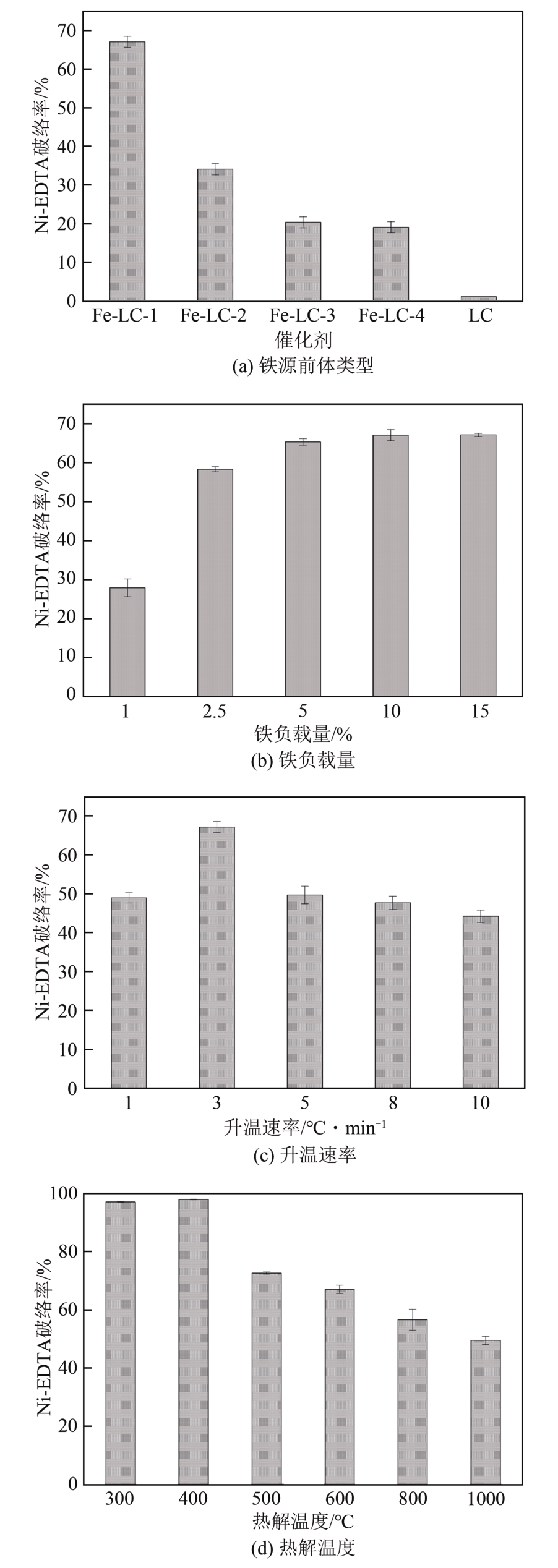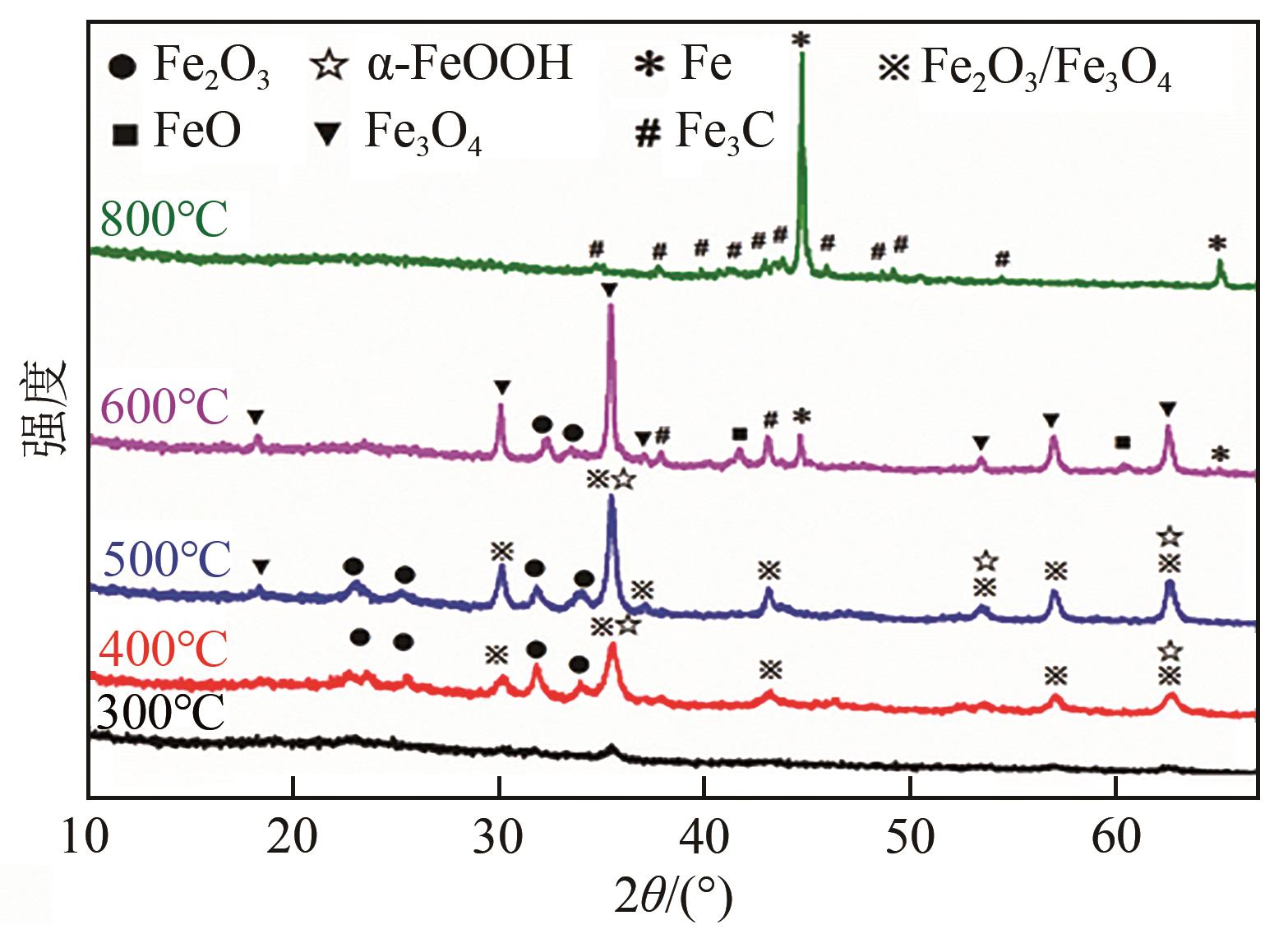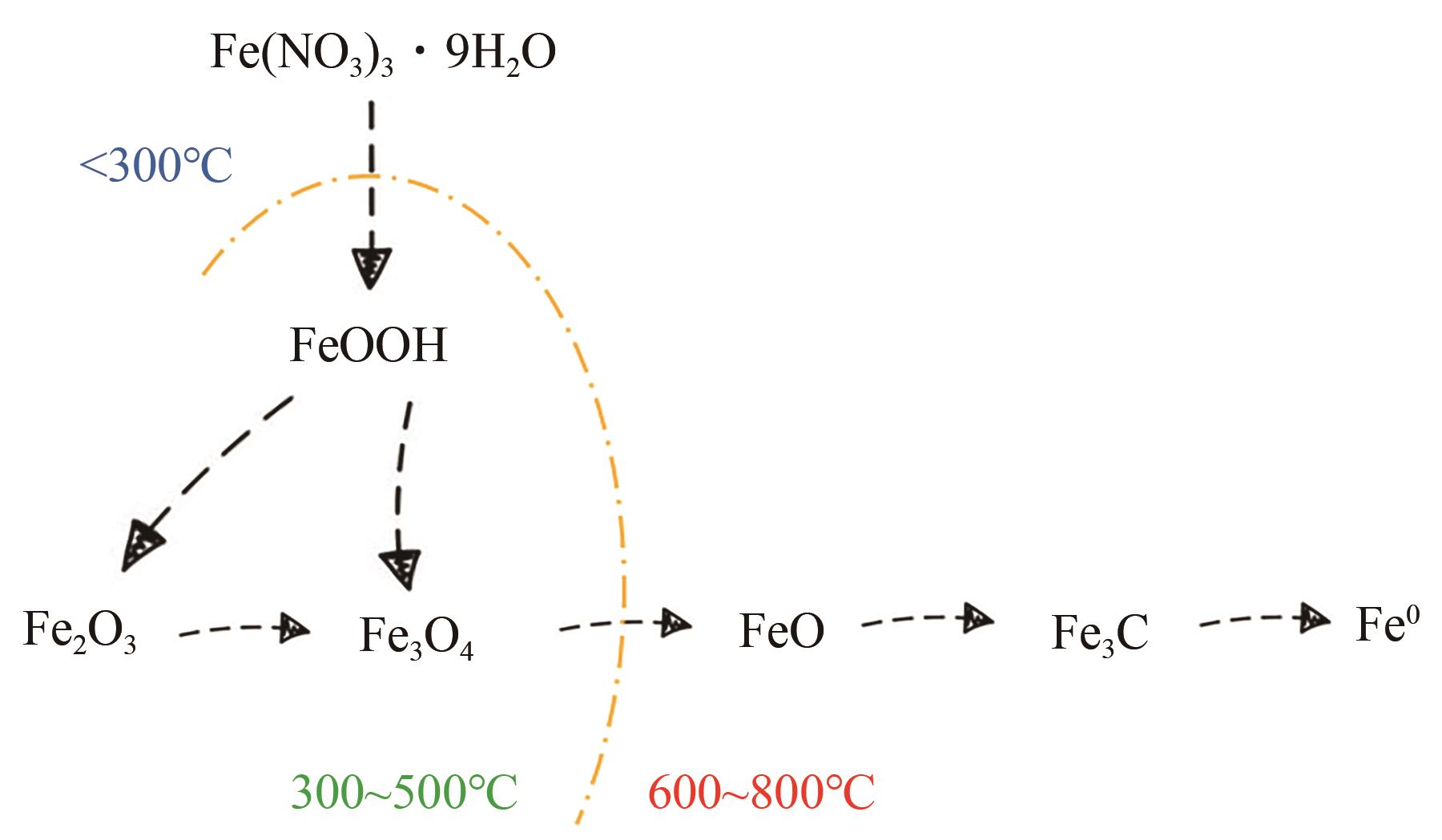| 1 |
BABUPONNUSAMI A, MUTHUKUMAR K. A review on Fenton and improvements to the Fenton process for wastewater treatment[J]. Journal of Environmental Chemical Engineering, 2014, 2(1): 557-572.
|
| 2 |
DU Junqun, ZHANG Baogang, LI Jiaxin, et al. Decontamination of heavy metal complexes by advanced oxidation processes: a review[J]. Chinese Chemical Letters, 2020, 31(10): 2575-2582.
|
| 3 |
HU Xiaobin, LIU Benzhi, DENG Yuehua, et al. Adsorption and heterogeneous Fenton degradation of 17α-methyltestosterone on nano Fe3O4/MWCNTs in aqueous solution[J]. Applied Catalysis B: Environmental, 2011, 107(3/4): 274-283.
|
| 4 |
LUO Hongwei, ZENG Yifeng, HE Dongqin, et al. Application of iron-based materials in heterogeneous advanced oxidation processes for wastewater treatment: a review[J]. Chemical Engineering Journal, 2021, 407: 127191.
|
| 5 |
DI LUCA C, MASSA P, GRAU J M, et al. Highly dispersed Fe3+-Al2O3 for the Fenton-like oxidation of phenol in a continuous up-flow fixed bed reactor. Enhancing catalyst stability through operating conditions[J]. Applied Catalysis B: Environmental, 2018, 237: 1110-1123.
|
| 6 |
霍丽丽, 姚宗路, 赵立欣, 等.典型农业生物炭理化特性及产品质量评价[J]. 农业工程学报, 2019, 35(16): 249-257.
|
|
HUO Lili, YAO Zonglu, ZHAO Lixin, et al. Physical and chemical properties and product quality evaluation of biochar from typical agricultural residues[J]. Transactions of the Chinese Society of Agricultural Engineering, 2019, 35(16): 249-257.
|
| 7 |
ZHU Xiaoxiao, LI Jianfa, XIE Bin, et al. Accelerating effects of biochar for pyrite-catalyzed Fenton-like oxidation of herbicide 2,4-D[J]. Chemical Engineering Journal, 2020, 391: 123605.
|
| 8 |
TOKARČÍKOVÁ M, SEIDLEROVÁ J, MOTYKA O, et al. Biochar from maize hybrid fermentation residue low cost and efficient heavy metals sorbent[J]. Ecological Chemistry and Engineering S, 2019, 26(4): 743-757.
|
| 9 |
莫官海, 谢水波, 曾涛涛, 等. 污泥基生物炭处理酸性含U(Ⅵ)废水的效能与机理[J]. 化工学报, 2020, 71(5): 2352-2362.
|
|
MO Guanhai, XIE Shuibo, ZENG Taotao, et al. The efficiency and mechanism of U(Ⅵ) removal from acidic wastewater by sewage sludge-derived biochar[J]. CIESC Journal, 2020, 71(5): 2352-2362.
|
| 10 |
王欢, 杨东杰, 钱勇, 等. 木质素基功能材料的制备与应用研究进展[J]. 化工进展, 2019, 38(1): 434-448.
|
|
WANG Huan, YANG Dongjie, QIAN Yong, et al. Recent progress in the preparation and application of lignin-based functional materials[J]. Chemical Industry and Engineering Progress, 2019, 38(1): 434-448.
|
| 11 |
ZAZO J A, BEDIA J, FIERRO C M, et al. Highly stable Fe on activated carbon catalysts for CWPO upon FeCl3 activation of lignin from black liquors[J]. Catalysis Today, 2012, 187(1): 115-121.
|
| 12 |
QI Yuanfeng, LI Jing, ZHANG Yanqing, et al. Novel lignin-based single atom catalysts as peroxymonosulfate activator for pollutants degradation: role of single cobalt and electron transfer pathway[J]. Applied Catalysis B: Environmental, 2021, 286: 119910.
|
| 13 |
MARTIN-MARTINEZ M, BARREIRO M F F, SILVA A M T, et al. Lignin-based activated carbons as metal-free catalysts for the oxidative degradation of 4-nitrophenol in aqueous solution[J]. Applied Catalysis B: Environmental, 2017, 219: 372-378.
|
| 14 |
MOHEDANO A F, MONSALVO V M, BEDIA J, et al. Highly stable iron catalysts from sewage sludge for CWPO[J]. Journal of Environmental Chemical Engineering, 2014, 2(4): 2359-2364.
|
| 15 |
TAM D M, SONG J Z, DEB A, et al. Biochar based catalysts for the abatement of emerging pollutants: a review[J]. Chemical Engineering Journal, 2020, 394: 124856.
|
| 16 |
ZHANG X F, YAN Q G, HASSAN E B, et al. Temperature effects on formation of carbon-based nanomaterials from kraft lignin[J]. Materials Letters, 2017, 203: 42-45.
|
| 17 |
SEPTIEN S, ESCUDERO SANZ F J, SALVADOR S, et al. The effect of pyrolysis heating rate on the steam gasification reactivity of char from woodchips[J]. Energy, 2018, 142: 68-78.
|
| 18 |
姜成春, 庞素艳, 马军, 等. 钛盐光度法测定Fenton氧化中的过氧化氢[J]. 中国给水排水, 2006, 22(4): 88-91.
|
|
JIANG Chengchun, PANG Suyan, MA Jun, et al. Spectrophotometric determination of hydrogen peroxide in Fenton reaction with titanium oxalate[J]. China Water & Wastewater, 2006, 22(4): 88-91.
|
| 19 |
王定美, 徐荣险, 秦冬星, 等. 水热炭化终温对污泥生物炭产量及特性的影响[J]. 生态环境学报, 2012, 21(10): 1775-1780.
|
|
WANG Dingmei, XU Rongxian, QIN Dongxing, et al. Influence of final hydrothermal carbonization temperatures on the yields and characteristics of sludge biochars[J]. Ecology and Environmental Sciences, 2012, 21(10): 1775-1780.
|
| 20 |
CHENG Z Y, LI S P, NGUYEN T T, et al. Biochar loaded on MnFe2O4 as Fenton catalyst for Rhodamine B removal: characterizations, catalytic performance, process optimization and mechanism[J]. Colloids and Surfaces A: Physicochemical and Engineering Aspects, 2021, 631: 127651.
|
| 21 |
ZHOU Yang, XIAO Bo, LIU Shouqing, et al. Photo-Fenton degradation of ammonia via a manganese-iron double-active component catalyst of graphene-manganese ferrite under visible light[J]. Chemical Engineering Journal, 2016, 283: 266-275.
|
| 22 |
胡二峰, 赵立欣, 吴娟, 等. 生物质热解影响因素及技术研究进展[J]. 农业工程学报, 2018, 34(14): 212-220.
|
|
HU Erfeng, ZHAO Lixin, WU Juan, et al. Research advance on influence factors and technologies of biomass pyrolysis[J]. Transactions of the Chinese Society of Agricultural Engineering, 2018, 34(14): 212-220.
|
| 23 |
TRIPATHI M, SAHU J N, GANESAN P. Effect of process parameters on production of biochar from biomass waste through pyrolysis: a review[J]. Renewable and Sustainable Energy Reviews, 2016, 55: 467-481.
|
| 24 |
SHARMA R K, WOOTEN J B, BALIGA V L, et al. Characterization of chars from pyrolysis of lignin[J]. Fuel, 2004, 83(11/12): 1469-1482.
|
| 25 |
HUANG Xianfeng, XU You, SHAN Chao, et al. Coupled Cu(Ⅱ)-EDTA degradation and Cu(Ⅱ) removal from acidic wastewater by ozonation: performance, products and pathways[J]. Chemical Engineering Journal, 2016, 299: 23-29.
|
| 26 |
MENA I F, DIAZ E, RODRIGUEZ J J, et al. CWPO of bisphenol A with iron catalysts supported on microporous carbons from grape seeds activation[J]. Chemical Engineering Journal, 2017, 318: 153-160.
|
| 27 |
LIANG Huiyu, XIAO Ke, WEI Liyan, et al. Decomplexation removal of Ni(Ⅱ)-citrate complexes through heterogeneous Fenton-like process using novel CuO-CeO2-CoO x composite nanocatalyst[J]. Journal of Hazardous Materials, 2019, 374: 167-176.
|
| 28 |
OUYANG Da, YAN Jingchun, QIAN Linbo, et al. Degradation of 1,4-dioxane by biochar supported nano magnetite particles activating persulfate[J]. Chemosphere, 2017, 184: 609-617.
|
| 29 |
赵明涛, 张婧雯, 李冬冬, 等. 花生壳生物炭的制备、表征及其对邻苯二甲酸二甲酯的吸附特性[J]. 应用化工, 2021, 50(9): 2415-2417, 2423.
|
|
ZHAO Mingtao, ZHANG Jingwen, LI Dongdong, et al. Preparation, characterization of peanut shell biochar and its adsorption properties on dimethyl phthalate[J]. Applied Chemical Industry, 2021, 50(9): 2415-2417, 2423.
|
| 30 |
RAJ A, YADAV A, ARYA S, et al. Preparation, characterization and agri applications of biochar produced by pyrolysis of sewage sludge at different temperatures[J]. Science of the Total Environment, 2021, 795: 148722.
|
| 31 |
PENG Xiaoming, WU Jianqun, ZHAO Zilong, et al. Activation of peroxymonosulfate by single-atom Fe-g-C3N4 catalysts for high efficiency degradation of tetracycline via nonradical pathways: role of high-valent iron-oxo species and Fe-N x sites[J]. Chemical Engineering Journal, 2022, 427: 130803.
|
| 32 |
HU Yong, LIANG Sha, YANG Jiakuan, et al. Role of Fe species in geopolymer synthesized from alkali-thermal pretreated Fe-rich Bayer red mud[J]. Construction and Building Materials, 2019, 200: 398-407.
|
| 33 |
MUNOZ M, DE PEDRO Z M, CASAS J A, et al. Preparation of magnetite-based catalysts and their application in heterogeneous Fenton oxidation—A review[J]. Applied Catalysis B: Environmental, 2015, 176/177: 249-265.
|
| 34 |
GAN Quan, HOU Huijie, LIANG Sha, et al. Sludge-derived biochar with multivalent iron as an efficient Fenton catalyst for degradation of 4-chlorophenol[J]. Science of the Total Environment, 2020, 725: 138299.
|
| 35 |
WAN Zhong, WANG Jianlong. Degradation of sulfamethazine using Fe3O4-Mn3O4/reduced graphene oxide hybrid as Fenton-like catalyst[J]. Journal of Hazardous Materials, 2017, 324(Part B): 653-664.
|
| 36 |
XIE Wuming, ZHOU Fengping, BI Xiaolin, et al. Decomposition of nickel(Ⅱ)-ethylenediaminetetraacetic acid by Fenton-like reaction over oxygen vacancies-based Cu-doped Fe3O4@gAl2O3 catalyst: a synergy of oxidation and adsorption[J]. Chemosphere, 2019, 221: 563-572.
|
 ), 赵子龙1,2,3(
), 赵子龙1,2,3( ), 张小山4, 王宏杰1,2,3, 董文艺1,2,3, 陈慧慧1
), 张小山4, 王宏杰1,2,3, 董文艺1,2,3, 陈慧慧1
 ), ZHAO Zilong1,2,3(
), ZHAO Zilong1,2,3( ), ZHANG Xiaoshan4, WANG Hongjie1,2,3, DONG Wenyi1,2,3, CHEN Huihui1
), ZHANG Xiaoshan4, WANG Hongjie1,2,3, DONG Wenyi1,2,3, CHEN Huihui1






